Conventional industry wisdom says it's only a matter of timebefore technology advances run branches out of the banking businessfor good.
|But there's a contrarian trend occurring among some creditunions that are expanding their branch networks.
|Our new list highlights the top 11 credit unions that operatethe largest number of branches, according to NCUA data. The agencyprovided Credit Union Times with a top 10 list thatincluded a tie for number 10.
|While many of these credit unions have grown their branchnetwork via acquisitions or mergers, they have also opened newbranches in underserved or growing markets.
|These 11 credit unions serve a combined membership base of morethan 10 million members and operate 1,080 branches.
|Industry-wide, the number of credit unions has declined from9,443 in 2003 to 7,240 in 2011. But number of branches hasincreased from 18,857 to 21,429 in the same years, according to theRaddon Financial Group.
|However, the data also shows the pace of branch growth hasslowed considerably, from 21,322 in 2008 to 21,429 in 2011.
|Credit union executives and industry experts told us brancheshave a strong future for several reasons.
|“For the vast majority of consumers, branches still play afairly critical role, but that role is changing,” said Bill Handel,vice president of research and development at Raddon FinancialGroup. “When you ask consumers about opening an account, more than80% of them – including Generation Y consumers – say they want tocome in and talk to someone in a branch.”
|That means the branch will continue to serve more as a sales andservice hub and much less as a transaction hub, said Handel.
|Enabling members to do daily banking transactions easily,quickly and conveniently is driving credit unions to keep up withthe latest banking technologies, including online, mobile,self-service kiosks and 24/7 call centers.
|Though credit union executives agree technology is critical formember service, many also say it can never replace the personalside of customized service that members expect from their localcredit union branch.
|Here's a look at the top 10 credit unions in terms ofbranches.
|No. 1, State Employees' Credit Union-244branches
|Years ago, the board of directors for State Employees' CreditUnion set a goal to open a branch in all 100 counties in NorthCarolina. That milestone was reached in 2011 with 244 branches.
|Just 10 years ago, SECU operated 148 branches. That numberclimbed to 213 in 2007 and the credit union is now the nation'ssecond largest at $24.7 billion in assets.
|“We wanted to bring convenience and service for all of ourmembers who live in the 100 counties,” said LeighBrady, SECU senior vice president.
|Although the Raleigh-based credit union provides online, mobileand call center services, branches are central to the creditunion's philosophy of building relationships with its 1.8 millionmembers, its executives said.
|Branches provide relationship-building services such asvolunteer income tax assistance and a low cost income preparationprograms, financial seminars, and services in trust and estateplanning, financial planning, investments and insurance.
|No. 2, Navy Federal Credit Union-221branches
|Headquartered in Vienna, Va., Federal Credit Union was organizedby just seven members in 1933. Today, Navy Federal operates 221branches across the U.S. and abroad serving 4 million members andat $49 billion in assets, now is the world's largest creditunion.
|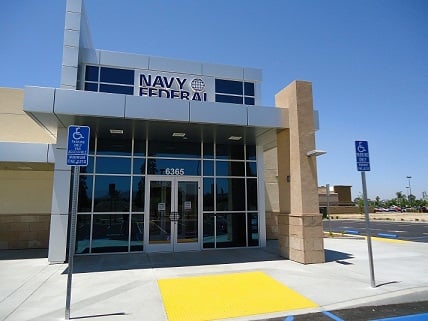 “Our philosophy is to balance allof the delivery channels to provide the service our members want.We just opened a branch at March Air Reserve Base in Riverside,California, to serve a large member population in a previouslyundeserved market,” said Steve Romano, executive vice president forbranch operations.
“Our philosophy is to balance allof the delivery channels to provide the service our members want.We just opened a branch at March Air Reserve Base in Riverside,California, to serve a large member population in a previouslyundeserved market,” said Steve Romano, executive vice president forbranch operations.
Romano said he regularly receives many requests from members toopen a branch near them. For some of those members, their requestshave been fulfilled.
|Since 2002, Navy Federal has been opening 12 branches annually,with plans under way to open “dozens” of new branches at or nearmilitary installations over the next several years, Romanosaid.
|Because many of its members are located throughout the nationand overseas, Navy Federal offers its members the latest technologyapplications via Web and mobile phone banking.
|No. 3, America First Federal Credit Union-101Branches
|The mission statement of the $5.4 billion America First FederalCredit Union perhaps says it all: To provide personal financialservices of a superior quality to the members/owners; our chiefconcern being their financial well-being.
|Perhaps that explains why America First's branch network hasbeen expanding. In 2005, the Riverdale, Utah-based credit union wasoperating 66 branches. By 2009, America First grew its branches to88, and currently has 101 branches.
|In June, the credit union acquired Moapa Valley Credit Union in Nevada. “The (two) branchescomplement our growth plan and service areas…and (we) welcome thesenewest members-owners (6,744) to America First,” said John Lund,executive vice president of America First.
|No. 4, Golden 1 Credit Union-84 Branches
|When Golden 1 Credit Union executives did a focus group with GenY members, they were surprised to learn that their millennialcustomers didn't select a bank from a Web search.
|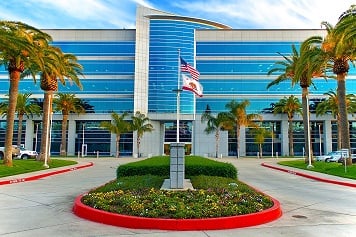 “They actually select theirbanking relationship based on a branch closet to their home orwork,” said Golden 1 CEO Donna Bland. “Branches are important tothem. Although they may not visit the branch often, they said whenthey have a problem they want to speak with someoneface-to-face.”
“They actually select theirbanking relationship based on a branch closet to their home orwork,” said Golden 1 CEO Donna Bland. “Branches are important tothem. Although they may not visit the branch often, they said whenthey have a problem they want to speak with someoneface-to-face.”
Based in Sacramento, Calif., the $7.8 billion Golden 1 works to move everyday banking transactions online orto branch self-service kiosks that provide a broader range oftransaction capabilities such as issuing cashier's checks or payingbills.
|“Our goal is to have our members walk into branches for theright kind of transactions such as opening a new account, whichallows us to spend more time with them and opens the idealopportunity to cross-sell our products and services,” Blandsaid.
|This strategy has helped Golden 1 grow its branch network byabout two branches a year since 2002.
|No. 5, Mountain America Credit Union-71branches
|The $3.2 billion Mountain America Credit Union sees its branchesevolving from transaction centers to financial knowledge andresource centers.
|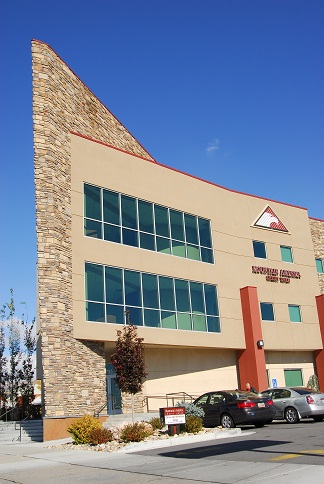 Along with growing demand for itsonline branch transaction services, the West Jordan, Utah-basedcredit union has seen its branch network grow from 37 branches 10years ago to 50 in 2007 to its current branch total of 71.
Along with growing demand for itsonline branch transaction services, the West Jordan, Utah-basedcredit union has seen its branch network grow from 37 branches 10years ago to 50 in 2007 to its current branch total of 71.
“Our basic philosophy is that we interact and serve our membersin ways they want to be served and when they want to be served,”said Jason Rogers, senior vice president of branches.
|He said Mountain America monitors peak traffic times within itsbranches to ensure there are enough personnel to servicemembers.
|Branches also double as calling centers where employees callmembers to proactively sell products and services. When they comeinto branches to open new accounts they not only want to know howthey work and how to set up features, but they also want to knowmore about loans and which option is best for them.
|“We are still in an environment where people are looking to savemoney,” Rogers said. “So we have had success in talking to peopleabout their loans and how we can help them improve their financialsituation.”
|No. 6, Security Service Federal Credit Union-70branches
|Security Service Federal Credit Union first opened its doors inSan Antonio, Texas in 1956 with just eight members and $25 indeposits.
|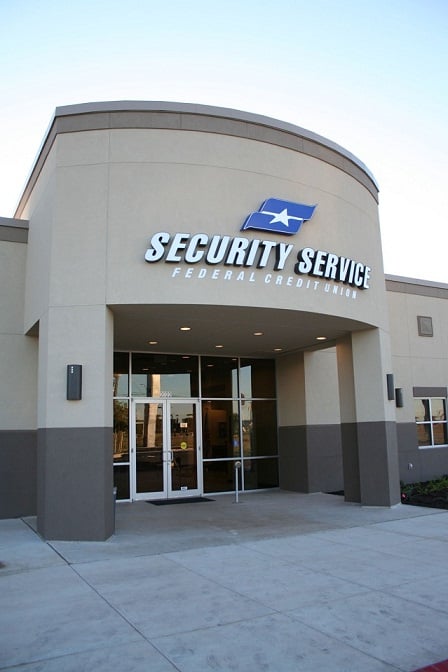 SSFCU now has $6.7 billion inassets and more than 830,000 members, with 37 branches in Texas, 19in Colorado and 14 in Utah.
SSFCU now has $6.7 billion inassets and more than 830,000 members, with 37 branches in Texas, 19in Colorado and 14 in Utah.
The credit union's network has grown from 25 branches in 2002 to42 branches in 2007 to its current number of branches at 70.
|“We survey our members regularly and they tell us they wantonline banking and mobile solutions, which we provide them. Butthere are also a lot of members who like to come into ourbranches,” said John Worthington, SSFCU's senior vice president forcorporate communications.
|“Many of our members want to maintain personal connectionsthrough our branches.” Worthington said SSFCU has modernizedthe look and design of its branches to establish a strong brand andcommunity presence.
|“We are very active in the communities that we serve. We believein giving back to the people who have made our credit unionsuccessful,” he said.
|No. 7, Chartway Federal Credit Union-67branches
|Ron Burniske, CEO for Chartway Federal Credit Union, rememberswhen banking industry experts were recommending that banks startclosing their branches because of the huge popularity of onlinebanking.
|That was 10 years ago when Chartway had about 35 branches. “Wethought that was crazy,” said Burniske. “Closing branches didn'tfit our strategy because we see our branches as a key sellingopportunity.”
|Apparently, that strategy has worked for Chartway of VirginiaBeach, Va., which grew its branches from 35 in 2002 to about 45 in2007.
|Since then, Chartway has been adding about two branches annuallyto its current total of 67 in 10 states, while its assets havegrown to nearly $2 billion. Mergers also have added to that total.
|Chartway also expects its online banking service to keepgrowing. When it opened its ebranch system, nearly 50,000 memberssigned up in just 60 days, Burniske said.
|No. 8, AlaskaUSA Federal Credit Union-64branches
|You'd figure in the expanse of the great states of Alaska andWashington, consumers would warmly welcome the conveniences of Webbanking from their own home.
|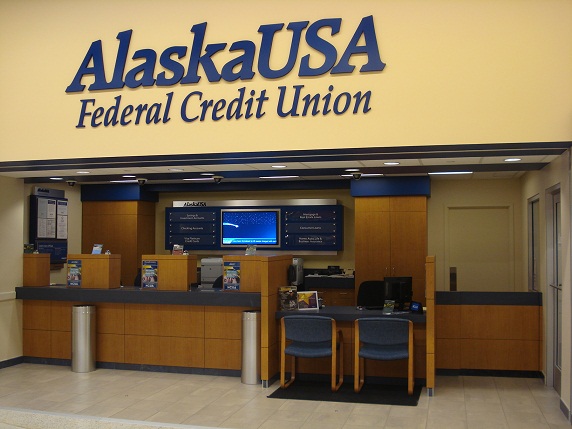
But many of its members also enjoy the convenience ofAlaskaUSA's branch network.
|“AlaskaUSA has been providing enhanced convenience to members byopening more full-service, in-store branches – a branch locatedinside a grocery store, for example – thereby allowing members totake care of all of their financial needs when they are runningother errands without having to make a second stop,” said DanMcCue, AlaskaFirst's senior vice president of corporateadministration.
|The strategy has helped the credit union grow its branches from35 in 2002 to 51 branches in 2007 to its total braches of 64 in2012 throughout Alaska and Washington.
|This year alone AlaskaUSA has opened a new branch in Anchorageand four in Washington. AlaskaUSA expects to grow its branchnetwork by focusing on the availability of in-store branches inmajor metropolitan areas, McCue said.
|No. 9, Space Coast Credit Union-59 branches
|Since Space Coast Credit Union of Melbourne, Fla. was founded in1951, it has always looked for ways to expand is products andservices to members. The credit union opened more than 60 years agoto serve employees working on our nation's space program at PatrickAir Force Base. Over the years, SCCU steadily grew its membershipand branch network.
|But in 2009, SCCU growth exploded when it announced a mergeragreement with Eastern Financial Florida Credit Union. Overnight, theresulting consolidated credit union became the third largest in thestate with more than 360,000 members, assets of $3.2 billion and 63branches.
|Prior to the acquisition, SCCU operated 32 branches. The creditunion has recently closed a few underused branches.
|“Historically, Space Coast Credit Union has not sought to expandthrough mergers,” said Doug Samuels, the big credit union'spresident/CEO. “Although the credit union has merged with a fewsmall credit unions during its history, growth has been achievedthrough continuous improvement and expansion of the servicesoffered to members.”
|No. 10 (tie), Desert Schools Federal Credit Union-51branches
|A group of 15 teachers founded Desert Schools Federal CreditUnion of Phoenix, Ariz. in 1939. They each deposited $5 and paid a25-cent membership fee.
|Since then, Desert Schools has grown into Arizona's largestcredit union with $2.9 billion in assets, more than 337,000 membersand 51 branches.
|Even though the credit union has struggled through difficultyears because of the housing crisis and other local economic woes,it appears Desert Schools has turned the corner.
|“Our 2011 results are a testament to our continued growth andstability,” CEO Susan Frank stated in Desert Schools' 2011 annualreport. “At the start of 2011, we projected a net income of $6.5million for the year. We ended 2011 with a net income of $23million, 359 percent above goal.”
|Desert Schools also grew its membership by more than 35,000.This year, the credit union is rolling out a mobile bankingsolution and a new ATM network with faster transaction times andthe ability for members to personalize certain transactionpreferences.
|No. 10 (tie), Suncoast Schools Federal Credit Union-51branches
|Suncoast Schools Credit Union of Tampa, Fla., has plans to openthree new branches this year even though the Sunshine state economyis still working to climb out of the Great Recession.
| “Even with the recent fall-off ofthe economy, we didn't close any branches. We didn't lay off anyemployees and we continue to serve our members through thesechallenging times,” said Susan Johnson, senior vice president ofservice center operations at Suncoast Schools.
“Even with the recent fall-off ofthe economy, we didn't close any branches. We didn't lay off anyemployees and we continue to serve our members through thesechallenging times,” said Susan Johnson, senior vice president ofservice center operations at Suncoast Schools.
“The is something we are really proud of and that supports ourphilosophy about the branch network, which is very important to ourmembers, as are the online, mobile phone and text bankingchannels,” Johnson said.
|Suncoast grew its branch network from 30 in 2002 to 49 branchesin 2007 to its current total number of branches of 51.
|Johnson said what has played a role in Suncoast's growth is thatconsumers are becoming increasingly aware there are better optionsfor them in the financial services arena with credit unions.Suncoast expects to focus its branch expansion in high growth andunderserved markets.
|Complete your profile to continue reading and get FREE access to CUTimes.com, part of your ALM digital membership.
Your access to unlimited CUTimes.com content isn’t changing.
Once you are an ALM digital member, you’ll receive:
- Critical CUTimes.com information including comprehensive product and service provider listings via the Marketplace Directory, CU Careers, resources from industry leaders, webcasts, and breaking news, analysis and more with our informative Newsletters.
- Exclusive discounts on ALM and CU Times events.
- Access to other award-winning ALM websites including Law.com and GlobeSt.com.
Already have an account? Sign In
© 2024 ALM Global, LLC, All Rights Reserved. Request academic re-use from www.copyright.com. All other uses, submit a request to [email protected]. For more information visit Asset & Logo Licensing.









